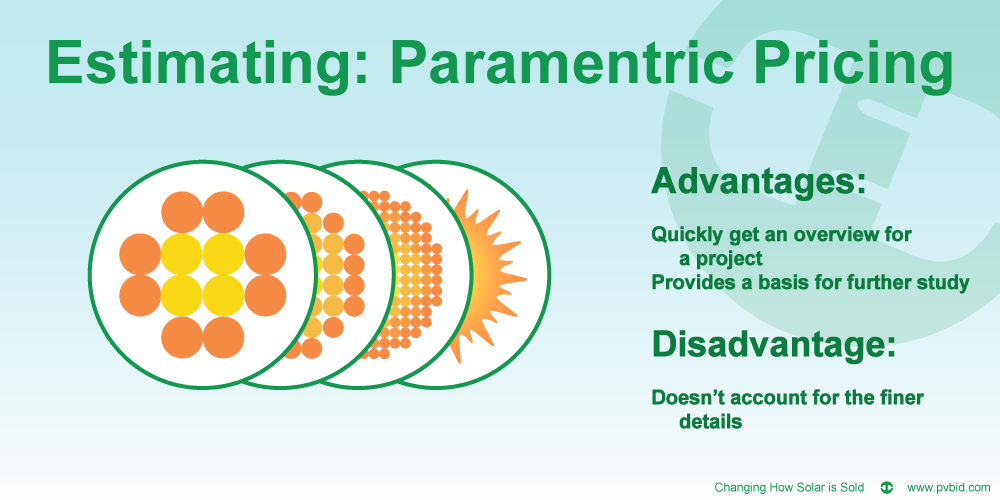The analogy that you often hear of altitude is fitting: the view from 10 feet, 100 feet, 1000 feet, 10,000 feet, etc. We’ve talked about the smaller levels, but now it is time for the biggest view. Today we are going to go into parametric estimating or comparison pricing.
As people, we talk in parametric pricing parables every day. Well, some of us do. This occurs mostly when we are spitballing the price of a system. We dredge up some crazy connections in our brains and suddenly we say things like “it is about $3.80 a watt”. Where did that come from?!
Obviously, it came from past projects that are “similar” without getting caught up in the details. At this level, you only have vague ideas of what modules will be used and, really, everything else about the project. Parametric estimating is for getting in the ballpark.
How does this work?
You take your past project data and refine them by some factor. Take my handy graph I generated from the OpenPV project by NREL of some projects in their database. In this case, you can’t learn much other than things like:
- The cost per watt of a PV system is likely to be in the range of $2.70/w and $5.30/w.
- The price varies wildly.
- If I had to guess, I’d say a project will likely cost $4.00/w
- If I really had to guess, I’d say this data is old and so more like $3.80/w
Imagining I possessed the ability to see which of these projects are ground mount vs roof mount, or which are prevailing wage vs which are standard wage, I might be able to glean a little more information. As always, I want to talk about the catch to this kind of approach. It leaves A LOT of room for error. This kind of pricing is only as good as your data collection and I do not recommend signing a contract based off of it. There might be cases where you see a nice, defined line with very little error. If you see that, start figuring out what your standard deviation and averages are. Maybe you can use parametric estimating in those cases. But it’s at your own risk!
I use this kind of parametric pricing on a smaller level and mix it with averages and takeoffs. A bit like the software PVBid is developing, I break down the system into palatable parts, analyze those, and then do take-offs where my variance or cost effect seems to be substantial.
Let’s connect!
Help the whole community by leaving a question or comment here, on Facebook, or shooting me a message on Twitter. Your questions and comments will invariably help others to understand too, because the comments and answers will invariably cast a different light on the same subject. I look forward to talking more about estimating! Shoot me a message if you have a particular topic you want me to address too! Now that I’ve completed my series on types of estimating I’m changing the focus a little. Maybe your request will help me find the right topic!

